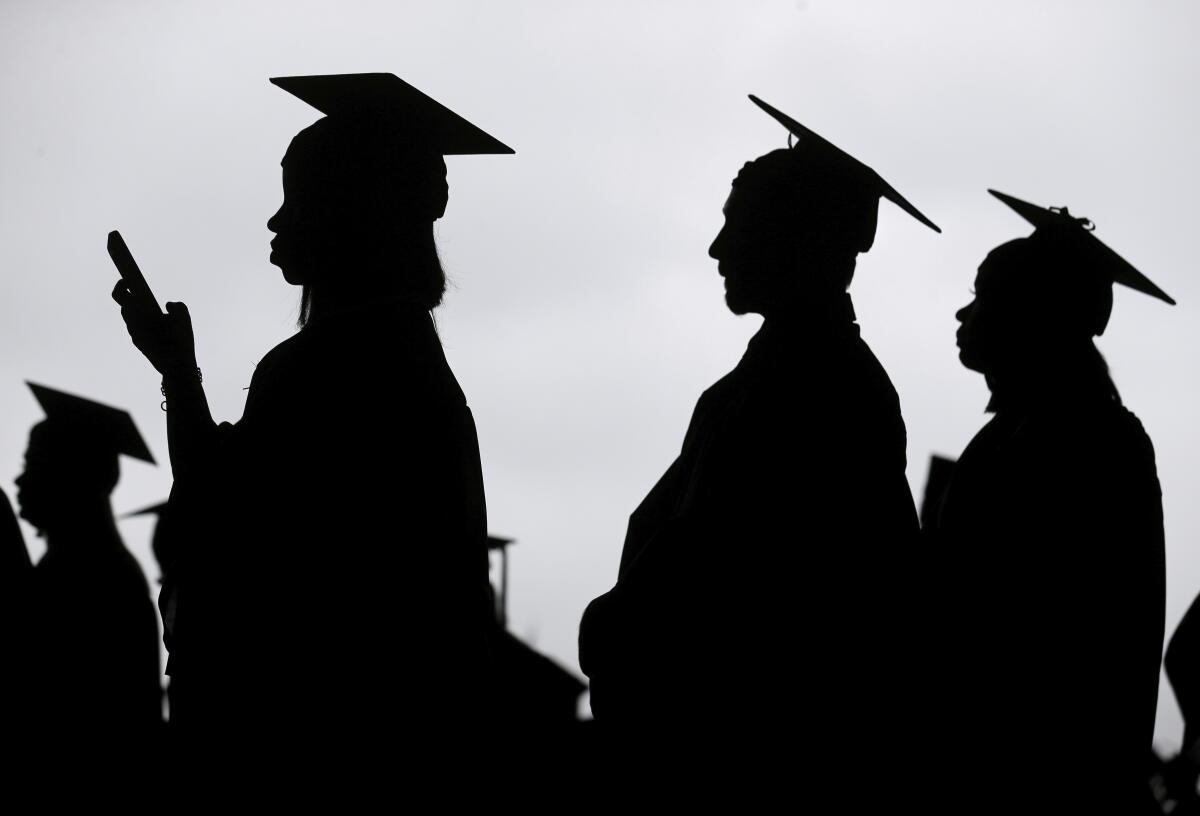Letters to the Editor: Taxes pay for fixing a crisis. Well, student debt is a national crisis

- Share via
To the editor: After reading the opposing columns by LZ Granderson and Jonah Goldberg on student loan debt relief, I want to relate my own story.
I borrowed money to go to college and then medical school. I was fortunate enough to pay off my loans in one year, after I finished my training. My wife and I were able to pay for both of our sons’ education, and they are now working and paying taxes.
My wife and I survived the 1994 Northridge earthquake, but we lost our 4-year-old daughter. We were homeless until we received help from the federal government. A few years later I had a bout with cancer and survived. I continued working and paying taxes.
Our democracy provides a system in which we elect officials who decide how to spend money, and the winners are often influenced by the politicians’ priorities. This isn’t perfect, but the government provides help in times of need and crisis. Many former college students are currently in a debt crisis, and they need our help.
Anastacio Vigil, Santa Monica
..
To the editor: The people who took out student loans entered into those arrangements with their eyes wide open. They knew both the amounts, interest rates and payment requirements.
Did any of these students, their parents or the school ever look at what the earning potential was for the college degree they were purchasing? Now they have buyer’s remorse and want me to chip in to pay for their poor decision.
Additionally, there has been no structural change for what these academies of higher education are charging for what could be considered a worthless piece of paper.
Jim Toomey, Reseda
..
To the editor: Goldberg complains about Biden’s student loan forgiveness. Much of the data he includes have no relationship to student loans. He talks about lawyers getting help, but people attending a four-year college will not graduate with a law degree. He also mentions members of Congress, but they make $174,000 per year and are therefore ineligible for loan forgiveness.
This program may negate the $330 billion in deficit reduction from the Inflation Reduction Act. The potential cost of $500 billion to $1 trillion is far less than the $2.3 trillion that the 2017 tax breaks primarily for the rich and corporations will cost.
But everyone knows that the rich and corporations need more tax relief than college graduates.
Cathy Gregory, Lompoc
..
To the editor: Goldberg does some pretty deceptive cherry picking to argue that Biden’s student debt relief program is “seriously regressive.”
His statistics rely on the Penn Wharton Budget Model, which he claims found “more than 6 in 10 beneficiaries of the $10,000 blanket forgiveness are in the top 60% of the income distribution.” By picking a statistic that ignores the Pell Grant recipients, who were overwhelmingly lower income, Goldberg avoids the most progressive aspect of the program.
He then ignores the authors’ own conclusion that 75% of the relief is going to those in households making less than $88,000 a year. Instead, he reworks their numbers by moving the middle quintile of earners (40%-60%) in with those who make more to create a statistic that seems like maybe this plan might not be progressive. In fact, it is driven entirely by the fact that 36% of beneficiaries are in the middle income range.
Goldberg has once again demonstrated that of lies, damned lies and statistics, the last of these can be the most deceptive.
Aton Arbisser, Los Angeles




